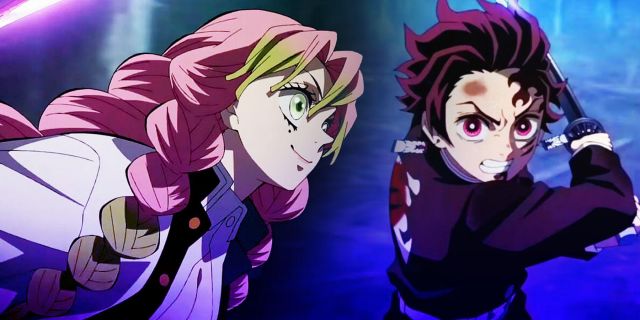A history is utilised to create a character’s identity when writing a dramatic plot for them. The backstory drives the audience to have an opinion on the character, which results in the figure being either likeable or despised by the audience.
Every character in Demon Slayer: Kimetsu no Yaiba has a sad and terrible past. These backstories serve a function, yet they have divided followers due to their overuse. As a result, fans worry if every Demon Slayer character’s biography is worth disclosing, especially because the third season’s individual backstories were lacking in comparison to previous seasons.
The Intentions Behind Demon Slayer’s Backstory Concept

The backstories in Demon Slayer help to shape each character’s overall identity. These stories provide background for why characters react or act in a certain way, whether they are watching their upbringing, past traumas, or previous lives.
Fans are introduced to the Flame Hashira, Kyojuro Rengoku, in Demon Slayer: Kimetsu no Yaiba – The Movie: Mugen Train, for example. Rengoku is charming and self-righteous, qualities instilled in him by his late mother and reflected in his combat style. The audience learns about Rengoku’s family and his alienated connection with his father, Shinjuro Rengoku, in the film. Learning about Kyojuro’s past makes his death more honourable and has an emotional impact on the spectator.
Similarly, backstories also provide information about the origins of specific demons. Most of these demons were originally humans who lived troubled lives. For example, in Season 2 of Demon Slayer: The Entertainment District Arc, the main antagonists are two siblings: Daki and Gyutaro. When they were humans, these two lived in poverty while growing up near Yoshiwara, which is known as the red-light district. Although these two constantly bickered, their sibling interactions reveal that they care deeply about each other, as evidenced when Daki does not want to separate from her brother in hell.
Regardless if the character is “good” or “bad,” these backstories invite the audience to feel compassion toward the characters, especially the demons. Usually, fans cheer for the “good guys,” characters like Kyojuro Rengoku or Tanjiro Kamado, because they are protecting innocent people from demons and would instantly outcast demons because of their evil deeds. However, knowing the backstory of these demons showcases that audiences can’t easily classify demons as “bad” because their ill-fortunate past lives led them to their demise. Thus, fans feel pity and empathy for demons. Feeling empathetic to each character, regardless of whether being human or demon, drives the overall message that every individual is suffering from trauma that impacts their decision-making and actions; therefore, fans can’t judge a character as bad for just wanting a better life for themselves.
The Flaws of Season 3’s Backstory Literary Device

The execution of the backstory device was praised in Demon Slayer’s previous seasons, as it effectively enhanced the storylines and plot developments and provided more dynamic identities for the characters. However, in Season 3, this core technique was missing.
Season 3 introduced two new Hashiras: the Love Hashira, Mitsuri Kanroiji, and the Mist Hashira, Muichiro Tokito. Muichiro had a tough childhood: his older twin brother was killed by a demon, and he harbored guilt for being the lucky one alive. As for Mitsuri, she joined the Demon Slayer Corps because she wanted to find a man who would love her for being so strong, a trait that was unladylike during those times.
The speed of this plot arc was criticised by fans. The quantity of backstory presented for these Hashiras was influenced by the tempo. Muichiro’s childhood was studied more thoroughly than Mitsuri’s. One probable reason is that Muichiro’s story is more tragic and can elicit a more dramatic and emotional reaction from the viewer than Mitsuri’s backstory’s shallow motive for finding love. As a result of the story’s substance involving family strife and death, it would make sense to present a more developed backstory for Muichiro. However, given the past seasons in which each Hashira had their own story explored, Mitsuri’s journey was unfairly cut short.

Furthermore, the Season 3 demons did not elicit sympathy from the audience. Hantengu, the first demon, was a frail and cowardly demon who was a human who committed various crimes. Hantengu maintained his innocence and blamed others for his mistakes. Hantengu, as a human, never accepted responsibility for his deeds, despite the fact that all proof of the crimes pointed straight to him. Gyokko, a serpent-like demon housed in a vase, accompanied Hantengu to the Swordsmith Village. Gyokko, unlike Hantengu, had no backstory other than his fascination with art.
When Muichiro and Tanjiro fought against these demons, fans did not have much sympathy for these demon characters because their personal stories showcased a sense of entitlement and selfishness. Arguably, whether human or demon, when it comes to backstories, it seems that if the backstory does not involve caring for others, then it won’t gain sympathy among fans. Taking care of a loved one showcases a sense of humanity that can make a character likable among fans. However, in the case of these demons, their selfish motives make their deaths well-deserved.
Backstories as a mode of storytelling are only necessary when developing a character or helping progress the main plot lines. Demon Slayer is known to give dramatic and compelling backstories to its characters, except this time, the third season fell short of its predecessors. While the manga is already finished, the anime still has a few more seasons. Production may want to consider cutting back on some backstories so that the main storylines are executed more thoroughly.















Leave a Reply